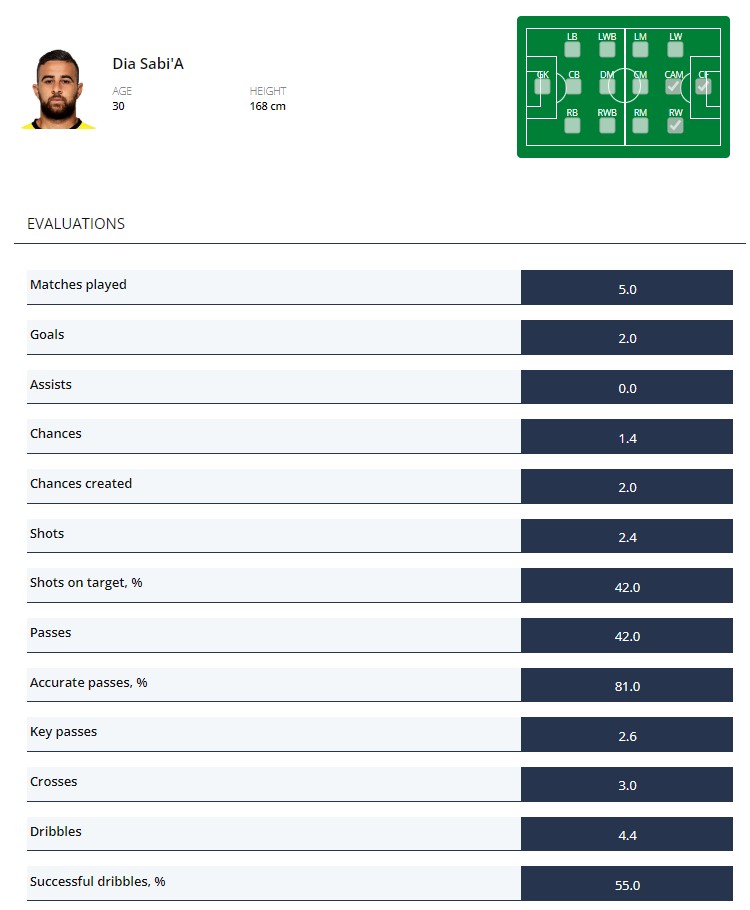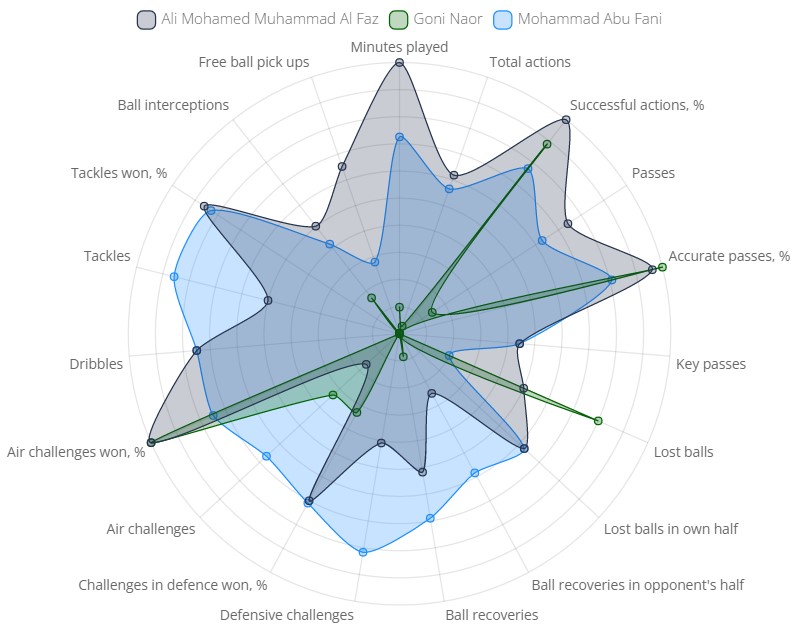Maccabi Haifa vs Hapoel Haifa analysis
One of the most interesting Derby matches the Israeli football has to offer will be played today in Samy Ofer stadium. Maccabi Haifa, the team placed top of the table at the moment, will host their city rivals Hapoel Haifa who need all points in the last 2 games they have before dividing the league into the playoffs.
Maccabi Haifa
The holding champions opened their season early playing the champions league qualification and making history promoting to the group stage for the third time in their history. Despite the fact no Israeli team was able to qualify to the UCL group stage and still finish as league champions before, it didn’t bother them to open well with 4 wins in a row. Playing every week in 2 competitions affected with two surprising loses, but an historic 2-0 win at home against Juventus got them back on the road opening immediately after a winning strike of 6 fixtures until the World Cup, they didn’t finish their continuing with 5 more wins, ending the strike of 11 wins in a row against their rivals for the title Maccabi Tel Aviv. Since then the team performance fell a bit and they started dropping points and ended their cup campaign earlier than expected, wanting to keep their place in the top of table they will meet Hapoel Haifa hoping a win in the derby will help.
Hapoel Haifa
The team started the summer with 9 signings, higher budget than usual and the amount of signings showed a good sign for the new season, but they finished the window terminating the contracts of 2 players and bringing new ones instead because they weren’t satisfied with their performance in training. After a win in the first fixture they got into a strike of 8 games without a win, losing 3 of them and sharing the points in 5, the management decided on a change in the coach role and they went out to the World Cup break with 4/12 more points. In the January transfer window they completed the departure of 3 other foreign players, bringing 4 others instead, since the return of the league from the break they counted 4 league matches without a loss and despite dropping quite a large amount of points in the last matches they still haven’t lost since the end of january. The reds get to the big derby when they must win all of their matches to get the possibility for the higher playoff and there is no better way to get 3 points instead of a win in the Derby. We will follow some interesting statistical comparisons worth watching about the teams before they are facing each other on the pitch for a battle on the pride of the city.
The Dia Saba effect

Dia Saba joined Maccabi Haifa in the January transfer window after an impressive half season in the Turkish super lig. In 2015/16 he finished as the top scorer of the Israeli league while playing mostly as a second Striker and scoring with off the ball movements, since then he played also in China, UAE and Turkey and added a variety of expertise to his skill set. This season he took a different role on the pitch, being more low and prefer to get the ball to his feet and create by himself the chances for the team. He dribbles mostly to keep the ball and open angles in low line defense, but still makes a decent amount of crosses (3 on average per match) and key passes (2.4) to create scoring chances, all of that without hurting his offensive action while he still make 2.4 shots per match, mostly when doing an off the ball movement behind the defensive line just like he used to do in the past. The variety of options Saba provides to Maccabi upgraded the team’s performance in all aspects, in the comparison ahead we can look through the changes of the team with and without Saba on the pitch. Without going too deeply and just briefly with our eyes it is noticeable that almost every aspect of the game has been upgraded after getting Saba, we’ll focus on the most effective ones:


We see a major difference in the number of attacks from the right flank, which is also Maccabi’s most preferred area to create their attacks, 37 times instead of 26 per match and 5 ends with a shot instead of 2.1, not surprisingly that is also where Saba like to make his actions and take the game there. We see also a difference in the number of entrances into the final third, 69 in average instead of 45, thanks to Saba’s ability to go lower when the game is stuck and open an option between the lines in order to break the density. The improvement is also in the entrances to the opponent's box (25 instead of 18), also thanks to the quality of Saba to hold the ball and create a key pass forward inside the box. Just makes sense that if the entrances to the final third and penalty box rises, the amount of shots per match will rise as well. (19 instead of 14). There’s only one aspect of the game that downgraded since Saba arrived and it’s the amount of dribbles per match, Maccabi adapted Saba style of play and his ability to open a transition to move the ball from the defense to attack and they now need to dribble less in order to make it happen.
The Goalkeeper position


Josh Cohen opened the season as the greens obvious choice in goal, but an injury just after the last match before the World Cup break gave the chance to play to the second choice Roy Mashpati. Mashpati played 6 matches in goal when Josh was injured, winning 5 of them and losing one to championship rivals Maccabi Tel Aviv, then Cohen was back taking the place again for the last 5 matches. Looking at the comparison we get an interesting picture, when Mashpati leads in the statistics of most aspects - It starts with the amount of shots Mashpati faced on average per match (something he can’t effect), saving also more shots as result of that, but it settles with him having better percentages than Cohen of shots saved out of all the ones he faced. The only aspect they have the same stats at is goals conceded, while they both pulled the ball 5 times out of their net. As of that I think the major change between the keepers is the variety they add to the match, looking on the passing stats we can see Mashpati had more passes in average per match (30) and more accurate passes per match (25), although Cohen had better percentage of accuracy (20/21, 95% accurate passes) it was mostly because he went for less risk on his actions and preferred “easier” options. Cohen will play in goal today and even though statistically and visually the differences between the keepers is not big, the importance of leg game into modern football raises the question - Does the coach really choose the right keeper first?
3 options for the Defensive Midfielder position, 3 different styles of play
The January window made the greens say goodbye to their captain Neta Lavi who left to Gamba Osaka in the Japanese league, leaving empty but quite large shoes to feel. In the last 3 matches the coach tried 3 different options to fill the role, let’s understand from the graph which one should play.


Goni Naor - the midfielder who just signed in the winter window to be the future replacement for Lavi played the least amount of minutes (59) from the three, although having decent percentages of success in the actions he made, he was unable to show real contribution to the defensive play of the team and was far behind the other options in aspects like recoveries, interceptions, tackles and passes. Mohammad Abu Fani & Ali Mohammed - Abu Fani is regular to play in front of Neta Lavi and join the attack but was placed in his position to fill the hole, in the league match against FC Ashdod. He shows the best stats on the defensive aspects such as ball recoveries (9) and tackles (12), in comparison to Ali with less (7 & 7), also leading in the challenges categories (26 total) which are an expression of his intensity and his ability to get into defensive (17) and offensive (9) types of challenges. While having Neta Lavi in the team Ali played beside him and could've played more forward in the pitch, placing him alone as defensive midfielder Against Beitar Jerusalem made it difficult for him to get into several challenges - 16 only, 10 defensive and 6 offensive. Another aspect Ali shows less contribution with in this position is ball recoveries in the opponent’s half, playing more behind he had only 3 of them while Abu Fani had 7. The stats that require positioning abilities and off the ball movement are the stats Ali has his advantage on compared to the other options, having the most ball interceptions (7) and most free ball pick ups (9) he shows he is the most familiar to this area from the options the team have. Abu Fani who naturally prefers to play in a more advanced position is not regular to live in these areas and has lower numbers. The last aspect is passes and total actions where Ali leads in a small quantity, but it shows that despite having a poor performance in comparison to what he is able for he is still the most balanced option for the defensive midfielder position.
Hapoel Haifa style of play under new coach Ronny Levy
After 9 league matches to the season Hapoel Haifa decided on a change in the coach role and appointed Ronny Levy instead of Nir Klinger. Since then the team was able to collect more points and show better performances on the pitch.


Looking at the stats between the team before and after the change we don't see much of a difference, just slightly better numbers after the change which make sense. In the graphs ahead we see the major differences between the teams, showing the change of style of play and how it affected the attack production. Hapoel stayed with 18 attacks from the center on average per match and increased the amount of attacks from the sides with emphasis on the right one - 24 instead of 23 on the left and 30 instead of 28 on the right. A change happened also in the way the team creates its chances, they try to cross as much as possible to the box area (12 on average per match) and even if a rival player takes the ball first they jump on the second ball afterwards. The change of style increased the amount of chances the team gets (4.5 instead of 3.4) and also the number of shots (9 instead of 7) which naturally make them more productive worth now a goal every match on average.

The key player for this new style is new arrival Eliel Peretz who came back to Israel after 2 seasons at Wolfsberger (Austria), the versatile midfielder makes his actions on every area in the attack and has a free role during the game. The last match showed best the importance of Peretz to his team, The reds finished in a 2:2 draw against Hapoel Jerusalem, scoring twice from crosses to the box which came from the right side, more precisely from Peretz’s legs, making 7 crosses and 3 key passes Peretz was able to create 2 chances for his team and they were enough to score. Maccabi’s left back Pierre Cornud just got back from an injury and so as the second option Sun Menachem, the team struggled to find a solution for the problem in the left side of defense and it can be the way for Hapoel to get their hand on top in the match.
Aleksandar Scekic importance for Hapoel Haifa defensive game
Hapoel Haifa signed 12 foreign players in this season’s windows and only 6 of them are still here, but the most important one is Aleksandar Scekic.


Since his arrival Scekic leads in every defensive aspect of the game in his team and shows high level performances every week, his best abilities are the physical ones because of his height (1.93 cm) and his strong body. We can see his impact on the defensive stats of the team in the graph here, showing the numbers before and after his arrival under the new coach. Despite having less defensive challenges (73) and air challenges (30), the success percentages of those categories (56% & 55%) increased along with the percentages of tackles won (54%). Other aspects such as Ball recoveries (53) and ball recoveries in opponent’s half (major upgrade of 12 instead of 7) also has been increased, while the only aspect decreasing is ball interception (45 instead of 59) an aspect that requires speed which is a weakness for tall and big players. Last aspect who had a major upgrade is not related to defense and it is the amount of passes (546 instead of 388), having also a better percentage of accuracy (85%). As a fact, if the team makes more passes, it means they hold the ball more during the game and that means the opponent holds the ball and tries to attack less.


While considering the big advantage Hapoel Haifa has in the defensive midfield with Scekic, we must be taking into account the problem Maccabi has in the exact same position. A comparison between Scekic and Ali Mohammed tells us a lot about the Montenegrian's amazing numbers, but also about the advantage he gives to his team in this position compared to the rival. On the graphs we can see he has double the amount of defensive actions on average per match, such as ball recoveries (7), Ball recoveries in opponent’s half (2), Defensive challenges (9), tackles (4) and ball interceptions (6). Adding much more aggression and power to the midfield of his team, he also leads on the air challenges aspect (4 against 1.05 of Ali’s). All stats mentioned shows contribution to the team of actions without the ball and that is where Scekic is first, while when taking in consider the aspects with the ball like passes (46), accuracy percentage of passes (90%) and mostly dribbles (3.1 against 0.33 of Scekic) Ali is far ahead and can get his team more contribution in the build-up and positional attacks.
Lost balls

Hapoel Haifa will probably be less dominant than their rivals in a natural way to these kinds of matches, which means most of the match will be played in the center and closer to Hapoel’s box. An interesting statistic is shown when you look on the lost balls in own half category in the league, Hapoel haifa has the largest amount of them with 17.7 on average per match, not surprisingly the player with most losses on his own half in the league is one of Hapoel’s key players Hanan Maman (44 total), having a poor season so far. Maccabi are much less dangerous in this aspect due to the departure of Neta Lavi who excels in this ability, but it still can be significant for them with right placing of the tools they still have in midfield.



